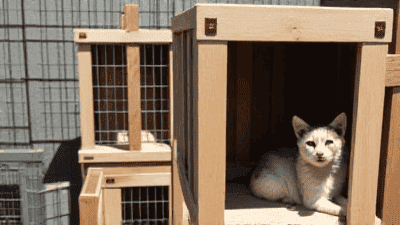
Pet adoption is a rewarding experience that can change the lives of both the animal and the adopter. However, the process of adopting a pet involves careful consideration and vetting by animal shelters and rescue organizations. These organizations aim to ensure that every pet finds a loving, safe, and permanent home. One of the key steps in the adoption process is the creation of a pet adoption profile, which provides shelters with essential information about potential adopters.
A pet adoption profile is a detailed application or questionnaire that potential adopters fill out when applying to adopt a pet. It provides shelters with information about the adopter’s lifestyle, living situation, and ability to care for a pet.
The profile helps shelters assess whether the adopter is a good match for the pet and whether the pet’s needs will be met. It also ensures that the adoption process is transparent, ethical, and in the best interest of the animal.

Shelters want to ensure that adopters are committed to providing lifelong care for the pet. This includes being prepared for the financial, emotional, and time-related responsibilities of pet ownership.
The adopter’s living situation must be safe and appropriate for the pet. Factors such as the type of home (house, apartment, etc.), access to outdoor space, and presence of other pets or children are considered.
Caring for a pet involves ongoing expenses, including food, veterinary care, grooming, and supplies. Shelters look for adopters who can afford these costs without compromising the pet’s well-being.
Previous experience with pet care is often a plus, as it indicates that the adopter understands the responsibilities involved. However, first-time pet owners can also be great adopters if they demonstrate willingness to learn.
Shelters aim to match pets with adopters whose lifestyle, activity level, and preferences align with the pet’s needs. For example, an active dog may require an adopter who enjoys outdoor activities and exercise.

Provide accurate and detailed answers to all questions. Shelters appreciate transparency and want to ensure that you’re a good match for the pet.
Emphasize your experience, knowledge, and commitment to pet care. If you’ve volunteered at a shelter or have experience with specific breeds, mention it.
Express your understanding of the pet’s needs and your willingness to provide a loving and supportive home.
Be open to considering different types of pets. Shelters may have specific recommendations based on your profile and lifestyle.
Shelters may be wary of adopters who seem unsure about the long-term responsibilities of pet ownership.
Applicants who live in environments that are unsafe or inappropriate for pets may be disqualified. For example, a home with no outdoor space may not be suitable for a large, active dog.
If an applicant cannot demonstrate the ability to afford pet care, they may not be approved.
Adopters who want a pet for the wrong reasons, such as as a gift or a status symbol, are unlikely to be approved.

Many shelters conduct interviews or home visits to further assess potential adopters. Be prepared to discuss your profile in detail and answer additional questions.
Use the interview as an opportunity to ask questions about the pet, such as their medical history, behavior, and preferences.
If a home visit is required, ensure that your home is clean, safe, and welcoming for a pet. Remove any hazards, such as toxic plants or loose wires.
Once approved, you’ll need to sign an adoption contract and pay an adoption fee. Some shelters may also require follow-up visits or check-ins.
Prepare your home with essential supplies, such as food, bedding, toys, and a crate or litter box. Introduce the pet gradually to their new environment and family members.
Many shelters offer resources and support for new pet owners, including training tips, veterinary referrals, and behavioral advice.
By adopting from a shelter, you’re giving a homeless animal a second chance at life.
Shelters rely on adoption fees and donations to care for animals in need. Your adoption helps support their mission.
Shelters take the time to match pets with adopters, ensuring a successful and long-lasting relationship.
Creating a pet adoption profile is a crucial step in the adoption process. By understanding what shelters look for in potential adopters and providing honest, detailed information, you can increase your chances of finding the perfect pet. Remember that the goal of shelters is to ensure the best possible outcome for both the pet and the adopter. Be patient, flexible, and open to the process, and you’ll soon welcome a new furry friend into your home.